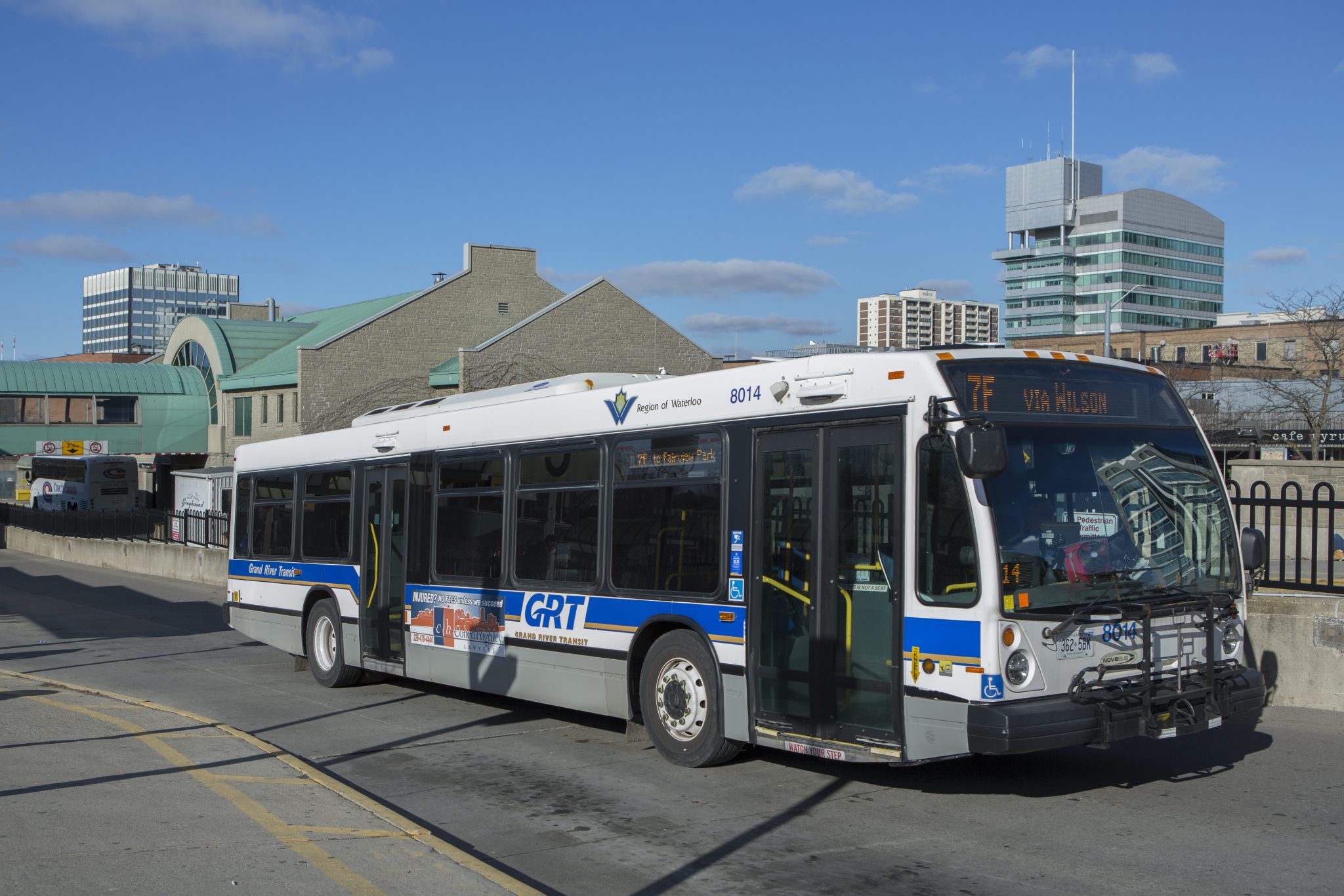GRT implements barriers in busses in order to keep drivers safe


Grand River Transit (GRT) will be piloting the use of protective barriers in some of it’s buses to protect drivers from violence on the job.
The pilot project comes in response to the most recent contract negotiations with Unifor through which their Health and Safety Committee raised concerns over front line driver safety.
GRT will be piloting the use of protective barriers in some of it’s buses to protect drivers from violence on the job.
“Three protective barriers have already been installed in new buses which are arriving in Waterloo Region, and the Region will be adding five [more] barriers [that] will be received and added to additional buses in early January,” Eric Gillespie, director of transit services for Waterloo Region.
The pilot project comes in response to the most recent contract negotiations with Unifor through which their Health and Safety Committee raised concerns over front line driver safety.
“The main challenge with drivers is that they’re providing a front line customer service while driving a large vehicle and this places them in a vulnerable position,” Gillespie said.
Gillespie indicated that one the biggest reasons for piloting vehicles is to obtain the feedback of drivers and the reaction of customers to the new safety measure. The Region is interested in knowing whether drivers have a specific preference on the basis of the measures utility when operating the vehicle. This is important given that some shields are permanent whereas others are discretionary in usage.
All classes of drivers are anticipated to benefit from the barriers in the long-term given projections of increases in transit usage in the region. Given this, the hope is that the expansion of the protective barriers will be useful in supplementing current preventative measures.
The region has more than 500 full-time and part-time bus operators who service 70 different routes. Given the extent of such services in a growing urban area the region has recognized that additional safety measures may be particularly helpful during after-hours when fewer people are around to help in crisis’.
The service area covered by GRT is both urban, suburban and semi-rural in character.
Over the past four years, GRT bus drivers have reported 11 physical assaults, seven attempts at physical assault, 30 threats and three cases of being spit on. Although these numbers aren’t alarmingly high, it’s important to remain proactive.
“The objective is that there will be no impact on customer service and that customers will continue to feel welcome on vehicles and perhaps feel more secure given that the driver is more secure and that’s why GRT will conduct outreach in early 2018 to determine if there is an impact to them,” Gillespie said.
At the same time the region recognizes the importance of customer feedback and wants to ensure customer service and an environment where individual rights to security of the person are maintained.
All classes of drivers are anticipated to benefit from the barriers in the long-term given projections of increases in transit usage in the region. Given this, the hope is that the expansion of the protective barriers will be useful in supplementing current preventative measures.
“The current measures provide multiple layers of preventative support, which include access to 911 from the operator radio and an emergency silent button with GPS. Busses are also equipped with video surveillance, which can be helpful with a criminal investigation and [in determining] if more could have been done to de-escalate the situation,” Gillespie said.
“Barriers are an added component to see whether they enhance the environment for bus operator’s safety.”


